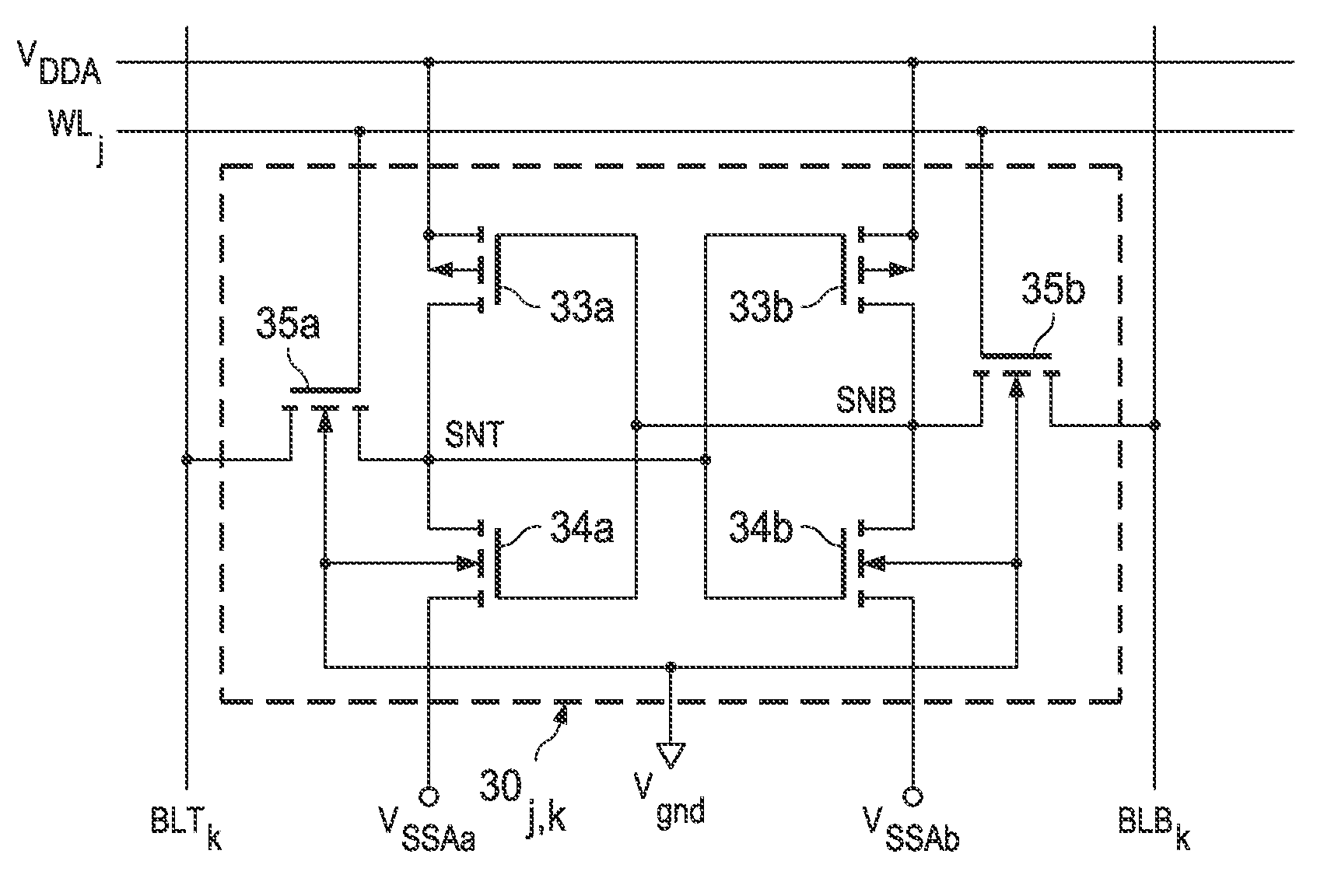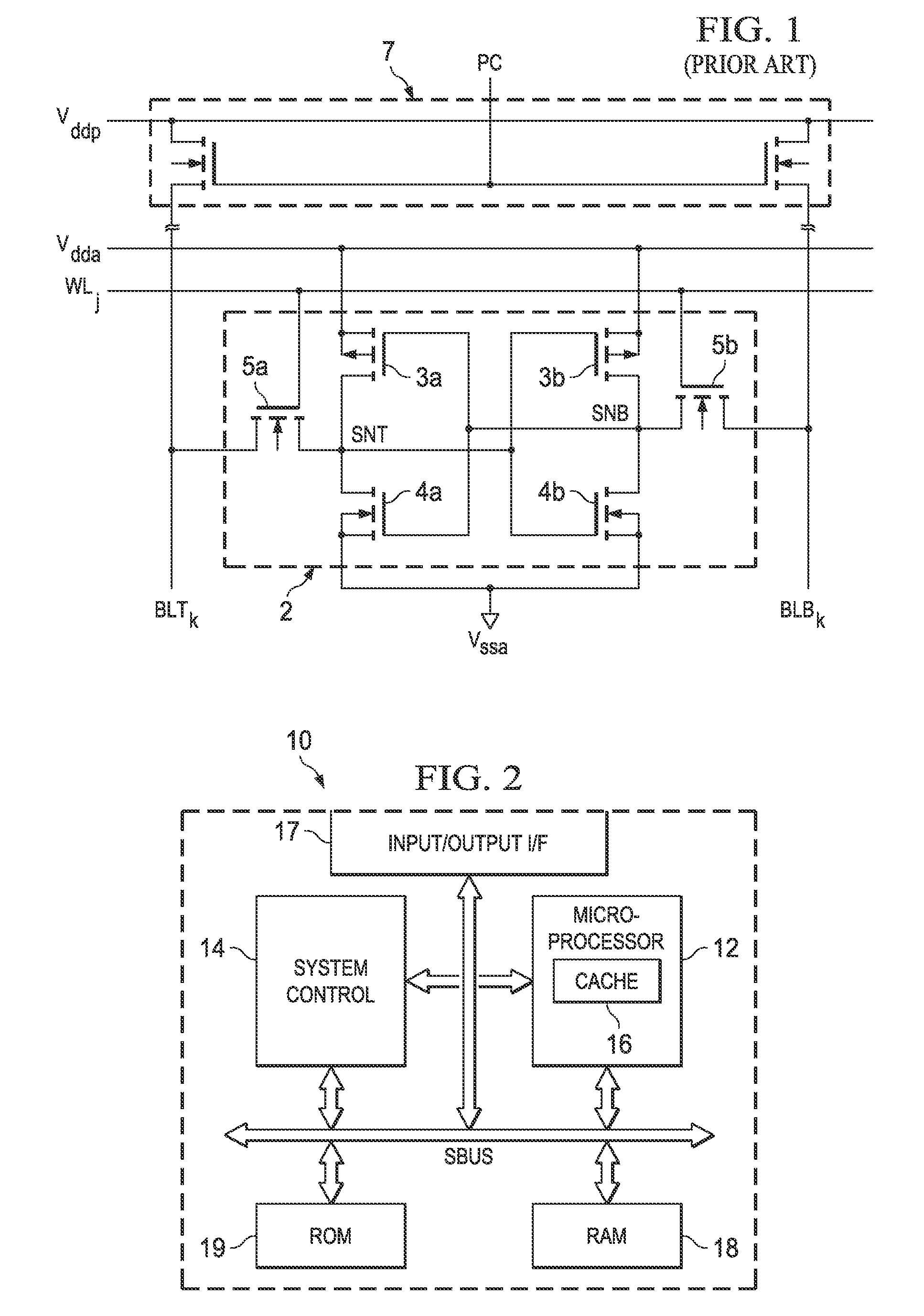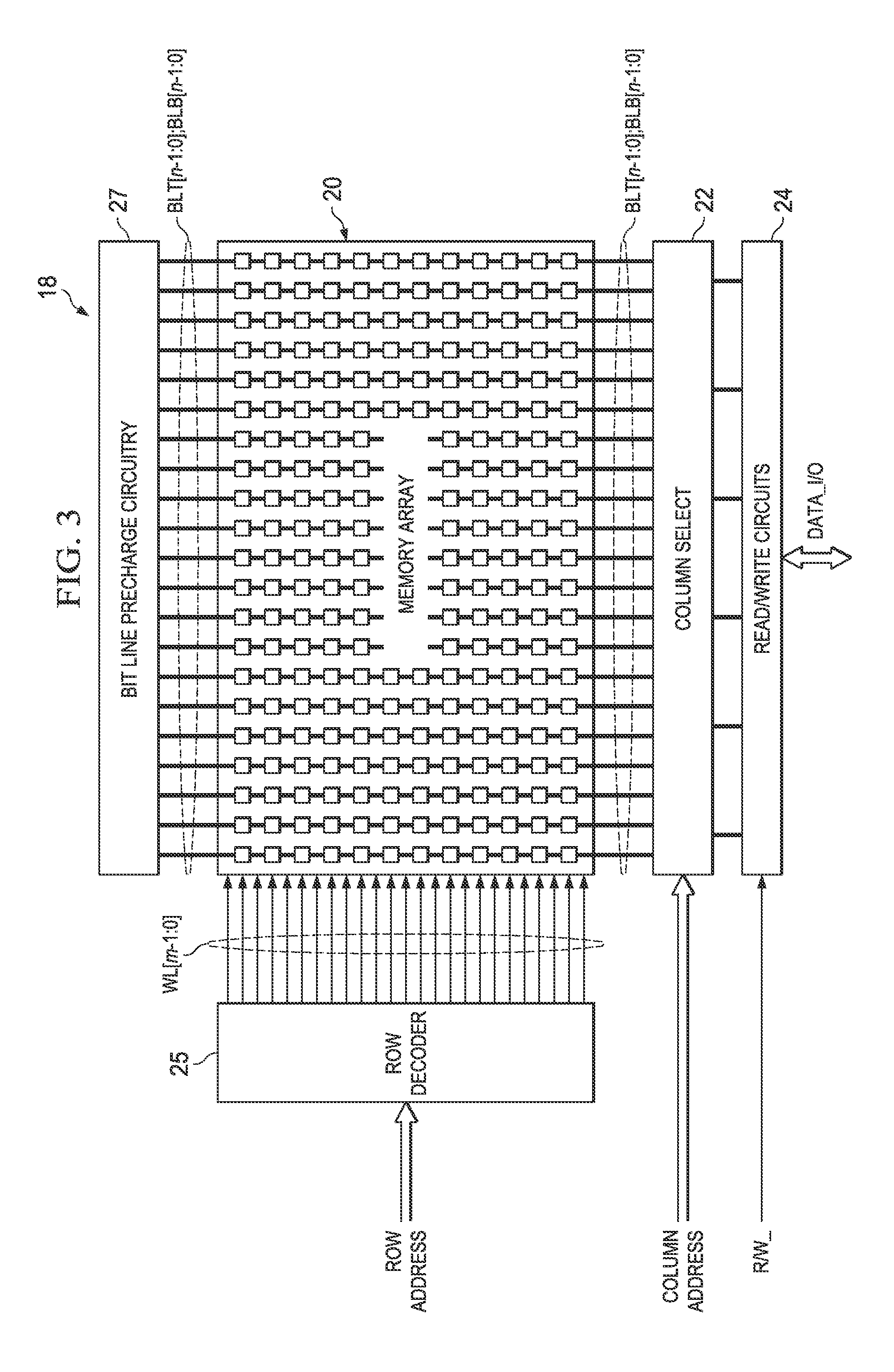Array Power Supply-Based Screening of Static Random Access Memory Cells for Bias Temperature Instability
a random access memory and temperature instability technology, applied in static storage, information storage, digital storage, etc., can solve the problems of increasing the probability of read and write functional failure, and physical scaling of device size raise significant issues, so as to reduce the bias to a transistor, reduce the bias, and increase the ground voltage
- Summary
- Abstract
- Description
- Claims
- Application Information
AI Technical Summary
Benefits of technology
Problems solved by technology
Method used
Image
Examples
Embodiment Construction
[0044]This invention will be described in connection with certain embodiments, namely as implemented into a method of testing static random access memories, because it is contemplated that this invention will be especially beneficial when used in such an application. However, it is also contemplated that embodiments of this invention will also be beneficial if applied to memories of other types, including read-only memories and electrically programmable read-only memories, among others. Furthermore, it is contemplated that embodiments of this invention may be used to test and screen circuit functions other than memories, including especially digital logic functions. Accordingly, it is to be understood that the following description is provided by way of example only, and is not intended to limit the true scope of this invention as claimed.
[0045]FIG. 2 illustrates an example of large-scale integrated circuit 10, in the form of a so-called “system-on-a-chip” (“SoC”), as now popular in...
PUM
 Login to View More
Login to View More Abstract
Description
Claims
Application Information
 Login to View More
Login to View More - R&D
- Intellectual Property
- Life Sciences
- Materials
- Tech Scout
- Unparalleled Data Quality
- Higher Quality Content
- 60% Fewer Hallucinations
Browse by: Latest US Patents, China's latest patents, Technical Efficacy Thesaurus, Application Domain, Technology Topic, Popular Technical Reports.
© 2025 PatSnap. All rights reserved.Legal|Privacy policy|Modern Slavery Act Transparency Statement|Sitemap|About US| Contact US: help@patsnap.com



